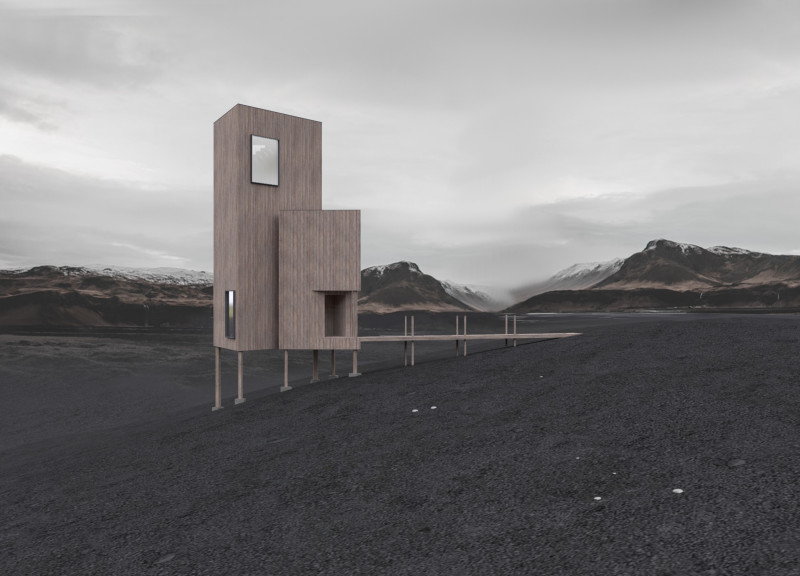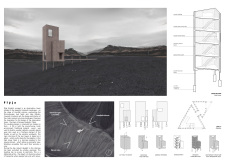5 key facts about this project
Flýja is an observation tower situated on the slopes of Hverfjall volcano in Iceland. It offers impressive views of the Dimmuborgir lava fields and Lake Mývatn. The design focuses on creating a strong connection with the surrounding landscape, which is defined by volcanic ash and a unique topography. The overall concept centers on minimalism and functionality, aiming to provide a space for contemplation and appreciation of nature.
Structure and Form
The layout features a dual-tower design supported by a wooden skeleton. This construction method ensures stability against the harsh weather conditions in the area. The minimalist style aligns with the colors of the landscape, allowing the structure to integrate with its environment while fulfilling its practical purpose. The towers are designed to be both aesthetically pleasing and functional.
Materiality
Wood is the main material used throughout Flýja. It serves as both structural support and a visual element that brings warmth to the design. The towers are covered in wooden planks, which form the exterior of the facade and enhance the experience for those who visit. The wooden window frames allow for natural light to stream into the interiors, creating an inviting atmosphere that connects the inside space with the outdoors.
Spatial Experience
Visitors access the viewing terrace via a staircase located in the high tower. This design encourages exploration and engagement with the breathtaking scenery of the surrounding area. Windows on each floor provide clear views, allowing occupants to appreciate the dramatic landscape. Natural light fills the staircase through carefully positioned openings, promoting a sense of openness and connection to the environment outside.
Functional Philosophy
One notable aspect of Flýja is the absence of electricity. This choice cultivates a peaceful atmosphere, allowing visitors to experience the silence and beauty of nature without modern distractions. The design emphasizes simplicity, which helps the structure blend into the landscape, making it easier for occupants to feel connected to their surroundings.
The combination of wooden elements and minimalism results in a refined design that promotes a tranquil experience. Light and shadow play across the interior, reflecting the forms and colors of the surrounding environment, creating a space that invites contemplation and renewal.



















































